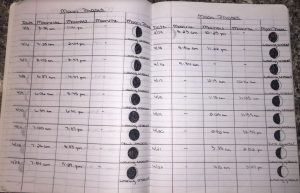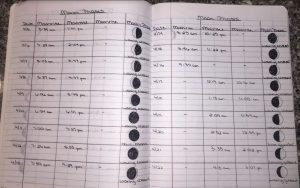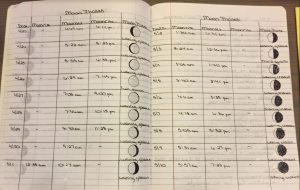TL;DR:
- Pattern recognition is a skill that can lead to discovery.
- Patterns help students better understand the world around them.
- Patterns are interdisciplinary.
In the world of science education, identifying patterns is an incredibly important skill that we teach our students. Pattern identification has led to discoveries in all scientific disciplines, but the patterns that are resonating with me right now are the ones visible in the night sky. There is something about the seasonal progression that leads to the presence of the winter constellations that brings me a sense of comfort. It gets darker earlier, the skies are clearer, and my friends Orion, Taurus, and the Pleiades are front and center to join me in reflecting on the end of the calendar year and look forward to welcoming in a new year.
Every night in December, I look up and I can see them getting higher and higher in the night sky each day, and it makes me happy to see them again. This is a pattern that I experience every year, and it never ceases to bring me joy and contentment. And because it is a repeating pattern, I know that I can look forward to it every year.
Take a moment to reflect on the patterns that are helping you and those that are holding you back. What are some patterns that you can use in your classroom with your students? Share on XPatterns in the Science Classroom
In the science classroom, I use patterns to help my students make sense of the world around them. Through pattern recognition, they can identify the waves in the electromagnetic spectrum, index fossils in rock layers, and the cycles of the tides. One of the most powerful examples of pattern recognition in my classroom occurs during our astronomy unit. My students create a chart in their interactive science journal to track the moon phases. Every day as we progress through the unit, students enter the time of moonrise and moonset, and draw and name the phase of the moon.



Only a few days in and my students start excitedly predicting the time of moonset and moonrise for the next day. They notice that certain phases have names that last for several days (waxing/waning gibbous and waxing/waning crescent) and some have names that occur on one day only (new moon, first quarter, full moon, and third/last quarter). Drawing the phases each day gives them an appreciation for the slow changes that are taking place in the relative positions of the Sun, Earth, and Moon over the course of a month. The added benefit to this exercise is that my students know what time of day they can look up and see the moon in the sky…and they do! They come into school and tell me how cool it was that when they saw the moon in the sky, it really looked like what they drew in their journals!
Patterns Outside of the Science Classroom
But the beauty of patterns is that it has applications outside of the science classroom. Math has skip counting and the Fibonacci sequence, history looks at the repeated rise and fall of governments, and English looks at the predictable arrangement of words in sentences. And don’t forget the patterns we experience in our everyday lives: meals are in a sequence of breakfast, lunch, then dinner; we have five workdays then a two day weekend; we are awake during the day and asleep at night. All of these patterns help to bring stability and routine to our lives. We depend on these patterns to let us function more efficiently.
Reflect on Patterns
As we begin to wind down the calendar year, I hope that all of you are able to take some time to look at the patterns in your life and your content. Take a moment to reflect on the patterns that are helping you and those that are holding you back. What are some patterns that you can use in your classroom with your students? If you have strategies or questions related to using patterns, please reach out and share your ideas so that we can all Science Better.
About Holly Stuart
Holly Stuart is an 8th grade science and design teacher in South Carolina. Her educational passions include finding new and innovative ways to get more students interested in STEAM, student-inspired discovery through inquiry, and learning science by doing science.
In addition to her out-of-the-box thinking in the classroom, she has successfully implemented The Grid Method into her teaching practice which led to her becoming a Teach Better Team Ambassador. Holly is married to her high school sweetheart and is a mother to three children.
When not teaching, she enjoys traveling and being outside with her family. Some of their favorite outdoor activities include hiking, running, and biking. (Holly often brings her telescope, binoculars, and microscopes with her on hikes!) Her indoor hobbies include reading, coloring, and learning more about sketchnoting and drawing.




